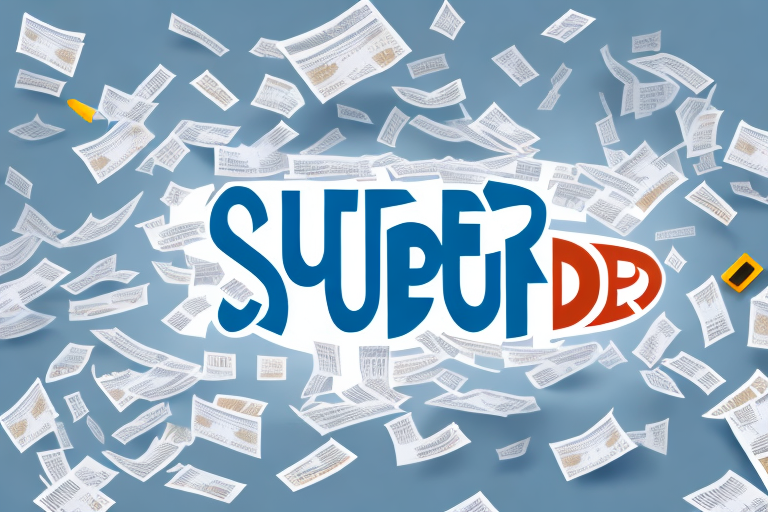Are you looking to take control of your retirement savings and start managing your own super fund? Self Managed Super Funds (SMSFs) are becoming an increasingly popular option for those wanting more control over their retirement funds. In this comprehensive guide, we will take you through everything you need to know about setting up and managing an SMSF.
Understanding Self Managed Super Funds (SMSFs)
Before delving deep into the setting up of an SMSF, it is important to understand what it entails.
A smsf management is a type of super fund that is managed by the members themselves. Members are also the trustees, meaning they are responsible for making the investment decisions of the fund, complying with the legal requirements of the fund, and ensuring that the fund is properly administered.
While SMSFs may not be suitable for everyone, they do offer a number of benefits for those who are willing to put in the time and effort to manage their own investments.
Benefits of SMSFs
One of the biggest advantages of SMSFs is the greater control they provide to the members. It means you have greater flexibility to invest in a wider range of options including shares, property, and cash. This can be particularly beneficial for those who have a good understanding of the investment market and are looking to maximise their returns.

SMSFs also provide the opportunity for significant cost savings compared to traditional super funds due to lower fees and charges. This is because SMSFs are generally smaller in size and have fewer members, which means that the costs of running the fund are lower.
Another benefit of an SMSF is the ability to tailor the fund’s investment strategy to suit individual preferences and risk tolerance levels. This means that members can invest in assets that they are comfortable with and that align with their long-term financial goals.
SMSFs also offer the ability to pool the retirement savings of up to four members, which can be helpful in managing the costs of an SMSF more efficiently. This can be particularly useful for families who want to pool their resources and invest together.
Risks and Responsibilities of SMSFs
However, with the greater control and flexibility comes greater responsibility, and SMSFs come with a number of risks. SMSFs require a lot of time and effort to manage effectively, and it is crucial that trustees have a good understanding of their responsibilities and legal obligations.
One of the key risks of SMSFs is the potential for members to make poor investment decisions. This can lead to significant losses and can have a negative impact on the overall performance of the fund. It is important that members have a good understanding of the investment market and are able to make informed decisions.
Another risk of SMSFs is the potential for fraud and non-compliance. Trustees have a legal obligation to ensure that the fund is properly administered and that all legal requirements are met. Failure to do so can result in significant penalties and can even lead to the fund being wound up.
It is vital that trustees undertake their role with care, integrity, and purpose, and familiarise themselves with the regulations and rules set out by the Australian Taxation Office (ATO). This includes keeping accurate records, ensuring that the fund’s investments are properly valued, and submitting annual returns on time.
Overall, SMSFs can be a great option for those who are willing to put in the time and effort to manage their own investments. However, it is important to understand the risks and responsibilities involved before making a decision to set up an SMSF.
Steps to Set Up a Self Managed Super Fund
Now that you have a clear understanding of what an SMSF is and the benefits and responsibilities that come with it, we will take you through the key steps to set up an SMSF.
Determine if an SMSF is Right for You
The first step is to determine if an SMSF is the right choice for your financial situation and retirement goals. This is where professional advice from a financial advisor is essential to help assess if an SMSF is right for your individual circumstances.
It’s important to understand that an SMSF requires a significant amount of time and effort to manage. You will need to be actively involved in the investment decisions of the fund and be responsible for complying with all legal and regulatory requirements. However, the benefits of having an SMSF can include greater control over your retirement savings, the ability to invest in a wider range of assets, and potentially lower fees.
Before deciding to set up an SMSF, you should consider your investment goals, risk tolerance, and financial situation. You should also ensure that you have enough funds to justify the costs associated with setting up and maintaining an SMSF.

Choose Your Fund Members and Trustees
The next step is to decide on who will be the members and trustees of the SMSF. There can be up to four members in an SMSF and each member must be either a trustee or director of the corporate trustee of the fund.
It’s important to choose members and trustees who have similar investment goals and risk tolerances, as this will help to ensure that the fund’s investment strategy is aligned with the interests of all members. You should also consider the skills and experience of the trustees, as they will be responsible for managing the fund’s investments and complying with all legal and regulatory requirements.
Create a Trust Deed
The trust deed is the legal document that outlines the rules of the fund and is the basis for the fund’s operations. It is important to ensure the trust deed meets all legal requirements and to seek legal advice if required.
The trust deed should include details such as the fund’s investment objectives, the rules for admitting new members, and the process for appointing and removing trustees. It should also outline the procedures for distributing benefits to members upon retirement or death.
Register Your SMSF with the Australian Taxation Office (ATO)
Once the trust deed is in place, you must register your SMSF with the ATO within 60 days of establishing the fund. The ATO will issue the fund with an Australian Business Number (ABN), Tax File Number (TFN), and also provide information on how to set up an Electronic Service Address (ESA) so that the fund can receive electronic communications from regulators.
Registering your SMSF with the ATO is a crucial step in setting up the fund, as it ensures that the fund is compliant with all tax and regulatory requirements. Failure to register the fund can result in significant penalties and fines.
Set Up a Bank Account for Your SMSF
The SMSF must have a separate bank account to manage the fund’s cash flow and make and receive transactions. It is important to ensure the account is set up in the name of the fund.
The bank account should be used solely for the purposes of the SMSF, and all income and expenses related to the fund should be processed through this account. This will help to ensure that the fund’s financial transactions are transparent and easily auditable.
Create an Investment Strategy
The SMSF’s investment strategy should reflect the investment objectives and risk tolerance of its members. It must be reviewed regularly and updated whenever there are significant changes, such as new members joining the fund or market conditions that affect investment performance.
The investment strategy should consider factors such as asset allocation, diversification, and risk management. It should also take into account the age and retirement goals of the members, as well as their personal circumstances and financial situation.
It’s important to seek professional advice when creating an investment strategy for your SMSF, as this will help to ensure that the strategy is appropriate for your individual circumstances and complies with all legal and regulatory requirements.
Managing Your SMSF
Once your SMSF is set up, ongoing management will be required to ensure the fund remains compliant with legal requirements. However, managing an SMSF can be a rewarding experience for those seeking greater control over their retirement savings.
One of the key benefits of an SMSF is the ability to have complete control over your investment strategy. This means that you can tailor your investments to suit your personal financial goals and risk tolerance. However, it is important to remember that with great control comes great responsibility.

Ongoing Compliance and Reporting Requirements
There are specific regulatory requirements that SMSFs must comply with on an ongoing basis. These requirements include preparing financial statements and annual returns, maintaining records of all transactions, and conducting annual audits.
It is important to keep accurate records of all transactions made by the SMSF, including investments, expenses, and contributions. This will help to ensure that the fund remains compliant with legal requirements and will make it easier to prepare financial statements and annual returns.
Annual Audits
An SMSF must have its financial statements audited annually by an approved SMSF auditor who is registered with ASIC. The auditor’s role is to provide an independent opinion on the fund’s compliance with legislative requirements and the SMSF’s financial position.
The auditor will review the SMSF’s financial statements and records to ensure that they are accurate and complete. They will also check that the SMSF has complied with all legal requirements, including those relating to investment strategy, contributions, and distributions.
Taxation and Lodging SMSF Annual Returns
An SMSF must complete and lodge an SMSF annual return each year with the ATO. The annual return includes information about the fund’s financial position, members, assets and income. The tax return must be lodged by 28 February each year, unless otherwise specified.
It is important to ensure that the SMSF’s tax return is lodged on time to avoid penalties and interest charges. Professional advice should be sought to ensure that the SMSF’s tax return is completed accurately and all legal requirements are met.
Updating Your Investment Strategy
The SMSF’s investment strategy should be reviewed and updated regularly to ensure that it aligns with the members’ objectives, risk tolerance, and changing market conditions. Changes to the fund’s circumstances, such as new members or significant life events, may require adjustments to the investment strategy.
It is important to seek professional advice when reviewing and updating the SMSF’s investment strategy. A financial planner or accountant can provide advice on investment options and help to ensure that the investment strategy remains compliant with legal requirements.
Managing an SMSF can be a complex and time-consuming process, but with the right advice and support, it can be a rewarding experience. It is important to familiarise yourself with the legal requirements and seek professional advice to ensure the fund remains compliant and achieves your retirement goals.
Related: Key Steps to Set Up Your Own Self Managed Super Fund


Leave a Reply